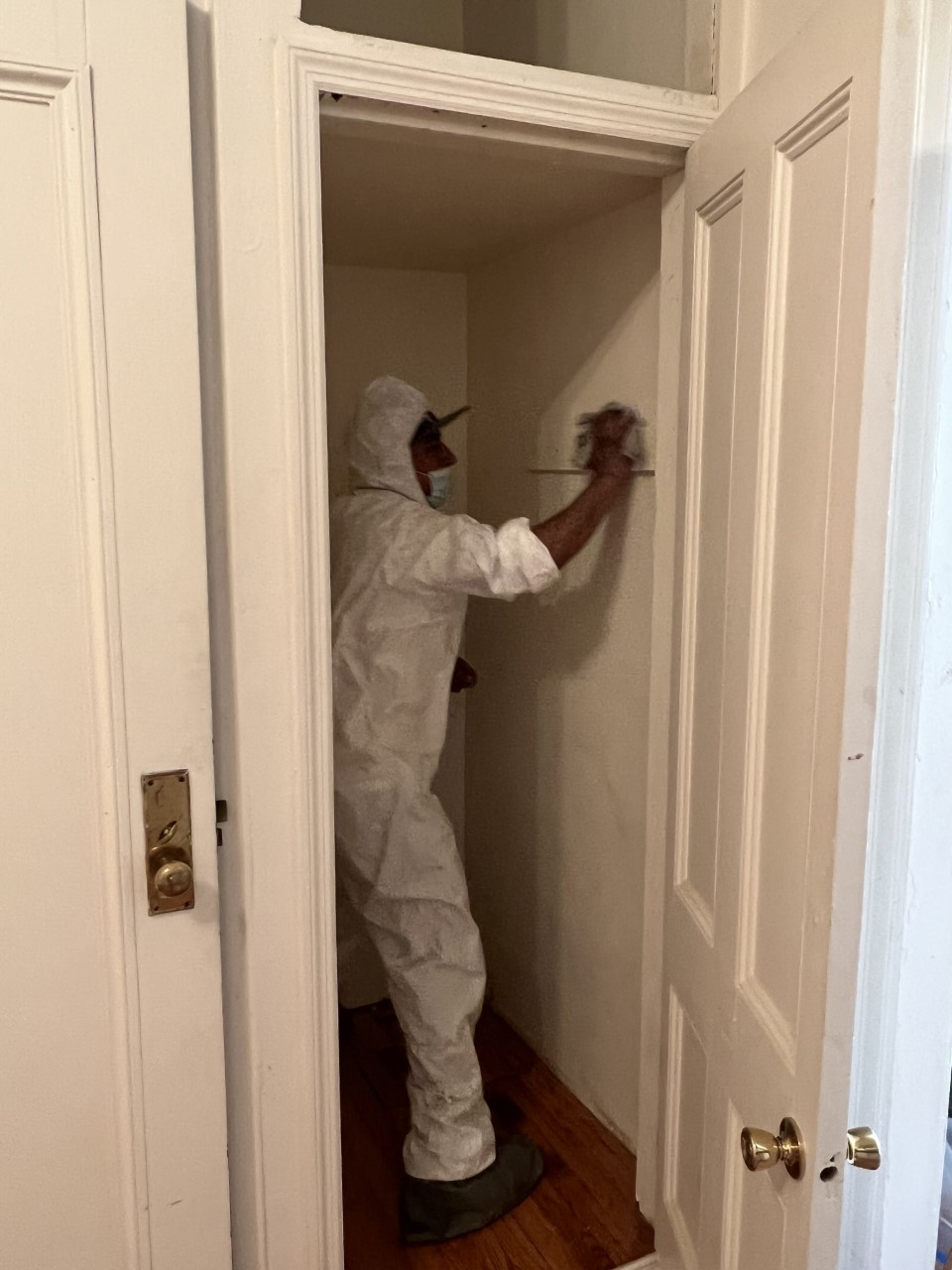Finest Practices for Making Certain Safe and Complete Lead Violation Reduction
Addressing lead infraction reduction requires a multi-faceted technique to make certain both safety and compliance. First assessments making use of sophisticated discovery approaches such as XRF analyzers set the stage for an exact understanding of contamination degrees. Incorporating appropriate control strategies, consisting of closed barriers and HEPA purification, combined with using individual protective equipment (PPE) for workers, develops the foundation of a secure operation. Precise clean-up methods, including HEPA vacuuming and wet-wiping, are essential. It's the last clearance procedure, entailing detailed examinations and laboratory testing, that truly verifies a lead-free setting, making certain lasting safety and security. Just how do these methods adjoin to ensure extensive lead abatement?

Preliminary Assessment
Performing a preliminary assessment is a critical very first step in lead offense reduction. This phase incorporates an in-depth evaluation of the property to recognize the presence, level, and particular areas of lead-based risks. Certified professionals, such as certified lead examiners or risk assessors, must perform a thorough site assessment, utilizing tools like X-ray fluorescence (XRF) analyzers to properly discover and gauge lead concentrations in paint, dirt, dirt, and water.
The assessment needs to also include a testimonial of the building's history, previous records, and any kind of grievances or health and wellness problems reported by owners - Lead Removal Contractors. Documenting the findings thoroughly is important, as these records create the basis for creating an effective abatement method. A thorough analysis likewise entails sampling and laboratory analysis, which are important to validate the presence of lead and guide subsequent actions
Moreover, it is imperative to interact the results transparently to all stakeholders, consisting of homeowner, occupants, and governing authorities. By making certain that the initial assessment is conducted with precision and rigor, professionals can lay a strong structure for a targeted and reliable lead reduction procedure, inevitably guarding public wellness and making certain conformity with governing criteria.
Appropriate Containment
Appropriate containment is crucial to protect against the spread of lead impurities during reduction activities. Effectively taking care of containment minimizes the risk of lead dirt and debris moving to non-work areas, therefore securing both the environment and people outside the immediate job area.

Routine examinations of the containment location are required to look for breaches or weaknesses in the obstacle. Any determined issues must be promptly dealt with to keep the integrity of the control. By sticking to these methods, reduction jobs can successfully control lead contamination and alleviate associated health and wellness threats.
Worker Security
Making certain worker security is extremely important during lead abatement jobs to avoid work direct exposure to unsafe lead particles. Vital actions include the use of personal safety tools (PPE) such as respirators, handwear covers, and full-body suits particularly made to block lead dust and fumes. Workers must undertake comprehensive training on the appropriate usage and maintenance of PPE, consisting of healthy testing for respirators to make sure optimum efficiency.
Engineering controls, such as regional exhaust air flow systems, are critical in minimizing airborne lead concentrations in the workplace. Administrative controls should also be executed, including limiting the period of exposure and rotating workers get redirected here to reduce individual resource exposure times. Normal clinical security and organic surveillance are crucial for very early discovery of lead absorption, allowing timely treatment and therapy.
In addition, developing a purification procedure is crucial. Workers should follow stringent purification treatments before breaks and at the end of their change to stop lead dust from being carried outside the workspace. This includes extensive hand and face washing with lead-specific cleaner and altering out of contaminated apparel.
Thorough Clean-up
Preserving a risk-free work setting prolongs beyond employee security and encompasses thorough clean-up to guarantee lead particles are extensively eliminated from the website. The procedure of meticulous clean-up is vital in stopping the recontamination of the mellowed out area and guarding both present and future occupants.
To attain an extensive cleaning, all workplace must be methodically decontaminated. This includes using specialized HEPA (High-Efficiency Particulate Air) hoover and wet-wiping methods to capture and eliminate great lead dust that might have chosen surface areas. It is critical to clean up all straight surfaces, consisting of floorings, window sills, and counter tops, as well as vertical surface areas that might have trapped lead bits.
Employees should wear proper personal protective tools (PPE) during clean-up to prevent direct exposure to recurring lead dust. Utilized pop over here cleansing products such as wipes, sponges, and mop heads should be taken care of based on contaminated materials disposal laws.

Final Clearance
Last clearance is the vital ending stage of lead reduction that figures out whether the website is risk-free for reoccupation. This vital step includes extensive evaluation and testing to verify that all lead hazards have been properly removed.

Last clearance testing not only shields future passengers however also makes certain conformity with local, state, and government guidelines. It offers as a documented validation of the reduction specialist's adherence to industry ideal methods. Ensuring a detailed and successful last clearance is necessary in safeguarding public wellness and promoting depend on in the abatement procedure.
Verdict
Guaranteeing safe and complete lead violation reduction necessitates a diverse approach encompassing preliminary analyses with advanced discovery approaches, effective control strategies, strict employee protection procedures, and careful cleaning procedures. The final clearance stage, including comprehensive assessments and laboratory screening, is important to confirm conformity with EPA criteria. Adherence to these finest techniques ensures a safe environment for owners, minimizes wellness dangers, and upholds regulative requirements, therefore advertising public health and security in lead-affected locations.